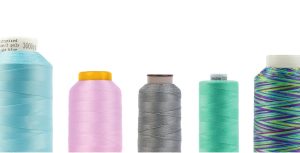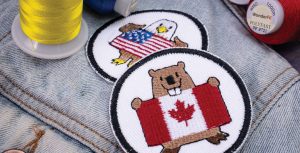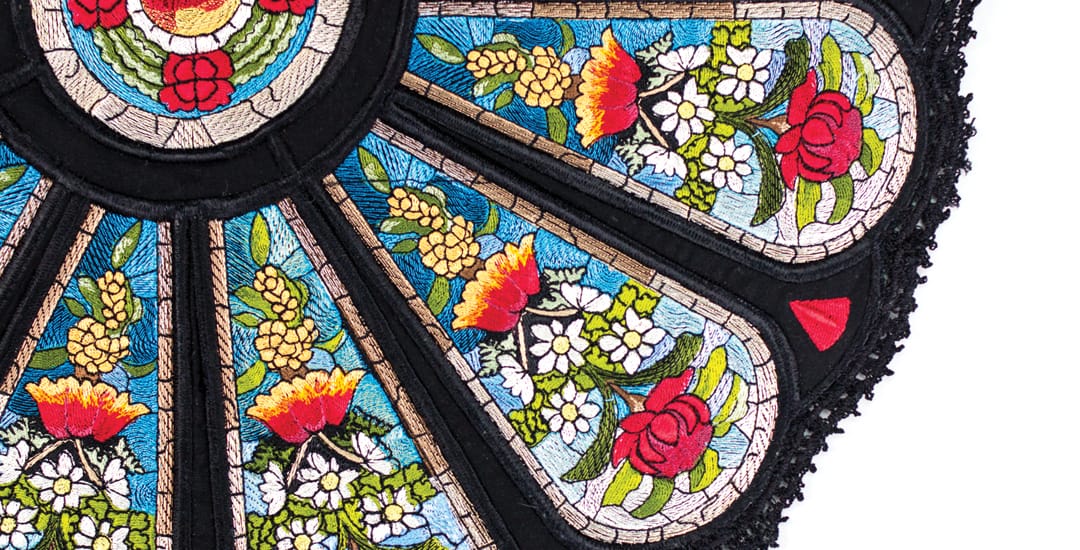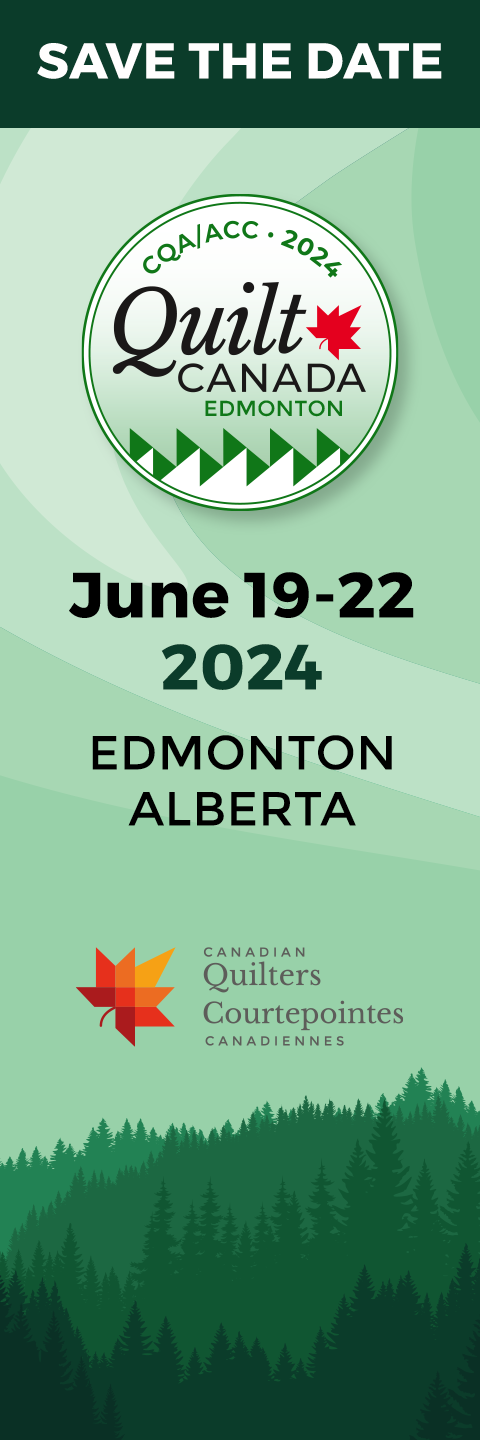You may have noticed some thread manufacturers make threads out of either rayon or polyester, while others make threads from both options. So, which one is better?
Relax, it’s not a competition. The truth is, neither of them is actually “better” than the other. Each material has its own unique properties and advantages, so choose the thread based on what you want to achieve in your project. Let’s take a closer look!
How is it Manufactured?
While rayon and polyester have similar properties and uses, they both have very different origins. Rayon is manufactured from wood pulp that is chemically dissolved and undergoes a multi-step process which results in the soft and lustrous rayon fibres you know and love.

On the other hand, polyester is a synthetic material designed with long, stable fibres that gives it the strength it is famous for. It is resistant to abrasion and many common household chemicals, including bleach, making it a reliable choice in almost any application. Polyester is well known as the easy-to-use, unfussy thread that knows how to get the job done.
Rayon is fairly universal in its appearance and texture, however polyester can come in many forms. You might come across terms such as cottonized polyester, wooly poly, multi-filament polyester, all-purpose polyester, or trilobal polyester. While these are all polyester threads, they vary greatly in terms of where they are used and how they look. The most comparable type of polyester to rayon thread is called trilobal polyester as they carry a similar appearance and are used for many of the same techniques.
Most thread is spun into a circular shape. What makes trilobal polyester unique is that it is actually formed into a triangular shape, giving it three flat surfaces to reflect light from. This reflection gives the thread a beautiful, lustrous shine.
Both rayon and polyester are (usually) colourfast and safe to iron if they come from a reputable manufacturer. They are easy to sew and machine embroider with, and will leave a beautiful, lasting impression wherever they are stitched. While there is a lot of crossover on where
the threads can be used, knowing more about the unique properties of each material will give you a good idea of when one might be a better choice than the other.
Rayon
This gorgeous thread has a naturally glossy sheen that carries across the thread in stitching and embroidery. One of its many advantages is that it keeps fabric staying soft and flexible even with dense stitching. The thread is also smooth and silky feeling to the touch, making it ideal for embroidery on shirts, clothing and items worn against the skin.
Rayon can be relied on to always give a beautiful impression wherever it is sewn and is a popular choice for these reasons. However, it prefers to stay away from long exposure to water and projects that need to endure a lot of abrasion as the thread fibres will break down in these situations.
Because of this, rayon is best used for decorative elements. You can use it in a bed quilt for quilting in small areas that are not holding the entire quilt together or for smaller techniques like appliqué. Art quilts and wall-hanging quilts are less of a concern because they will not be subjected to the same amount of handling.

Trilobal Polyester
Unlike rayon, polyester is the go-to choice for projects that will be exposed to water and abrasion over long periods of time. Polyester also has a greater resistance to chemicals and mildew. Want to machine embroider a cute design on a bathing suit? No problem, polyester has you covered.
What about embroidering your child’s or grandchildren’s play clothes, backpacks and accessories? Polyester will stand up far better to whatever they throw at it (mud pies included).
In comparison to rayon, polyester has a tendency to feel a little less soft and smooth to the touch. It is also stiffer and leaves fabric less pliable when densely stitched. The thread carries a different shine from rayon’s natural gloss, reflecting the light in a fractured way that can look slightly artificial. Despite this, polyester’s strong and resistant characteristics make it ideal for edge-to-edge quilting on bed quilts, in addition to any decorative elements. It can also withstand trips through an industrial washing machine and endure exposure to the elements. This hardy thread can reliably do the job while looking good doing it.
We hope this guide helps you understand the unique characteristics of these thread materials, and helps you make an informed decision when choosing the best one for your next project!


